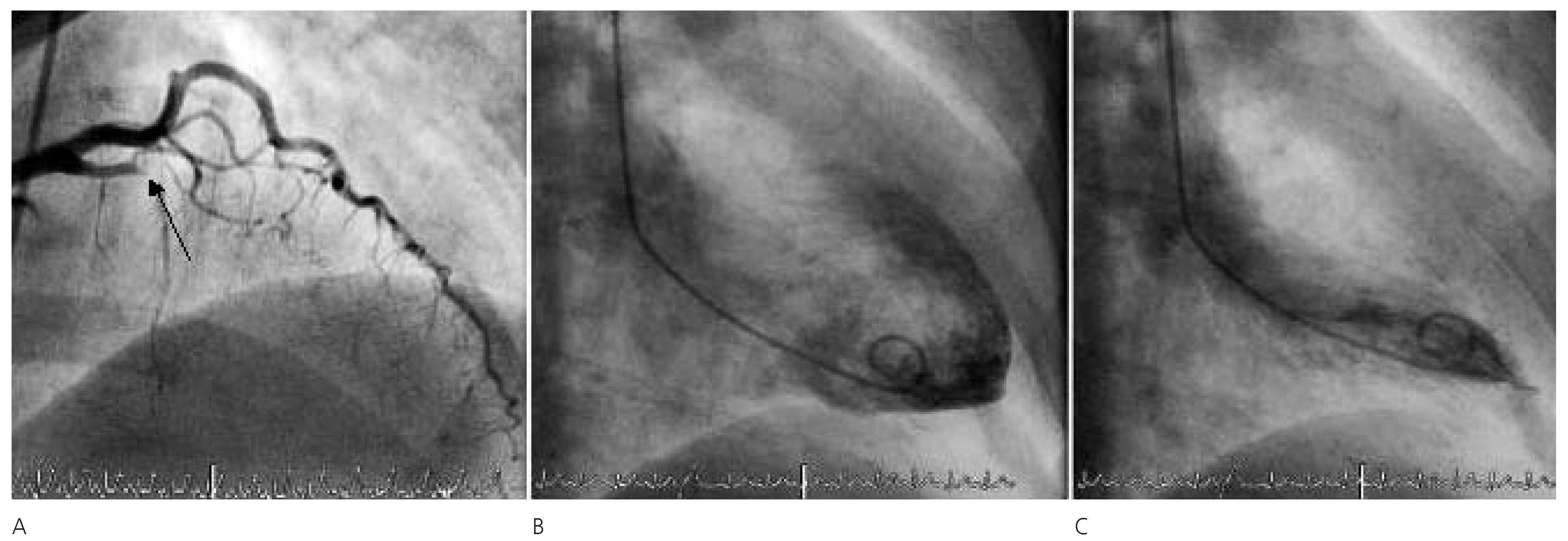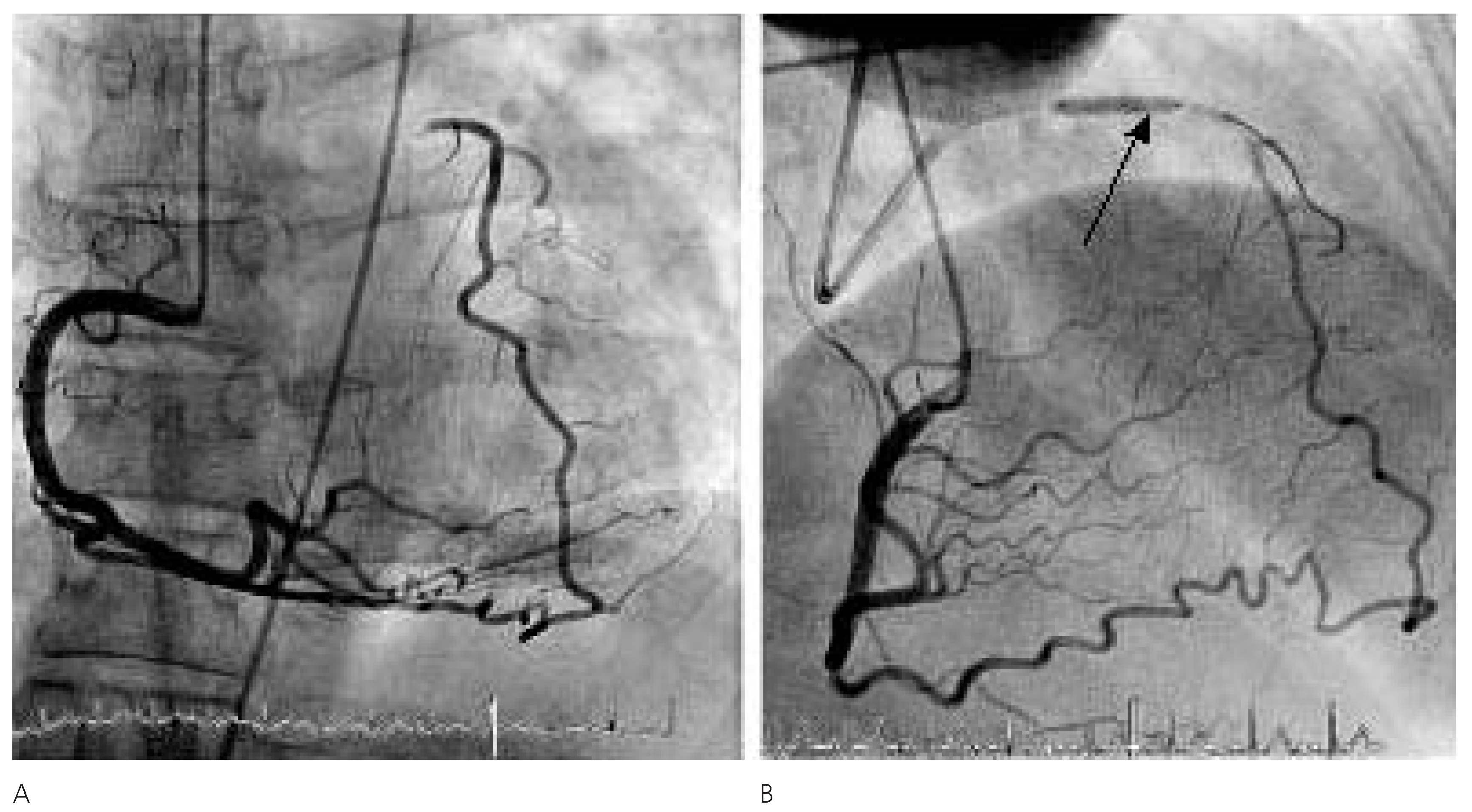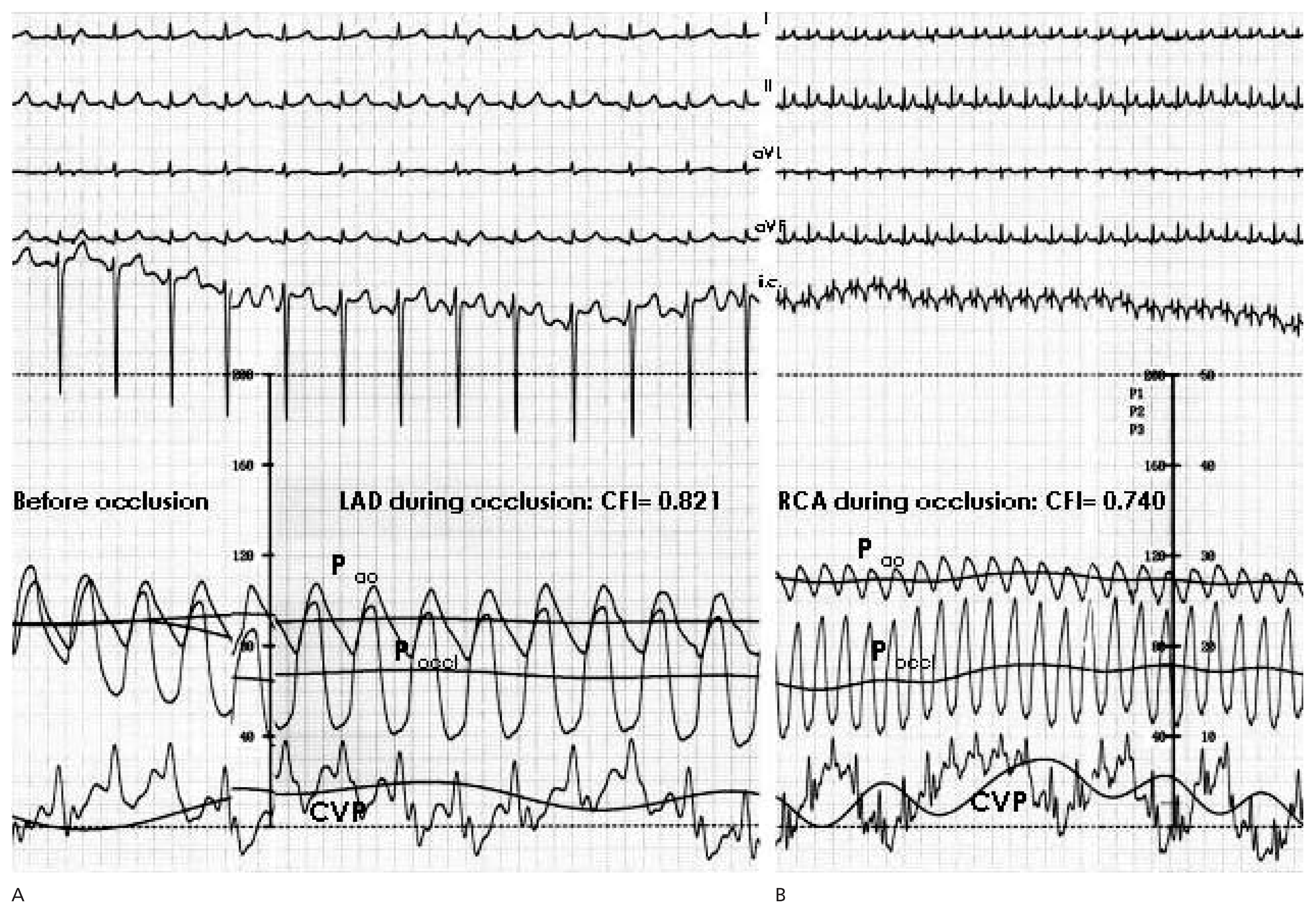Six Simultaneously Employed Methods to Gauge the Coronary Collateral Flow of the Decade
Case report
Conflicts of Interest
References
- Rentrop, K.P.; Cohen, M.; Blanke, H.; Phillips, R.A. Changes in collateral channel filling immediately after controlled coronary artery occlusion by an angioplasty balloon in human subjects. J Am Coll Cardiol. 1985, 5, 587–592. [Google Scholar] [CrossRef] [PubMed]
- Seiler, C.; Fleisch, M.; Garachemani, A.; Meier, B. Coronary collateral quantitation in patients with coronary artery disease using intravascular flow velocity or pressure measurements. J Am Coll Cardiol. 1998, 32, 1272–1279. [Google Scholar] [CrossRef] [PubMed]
- Vogel, R.; Zbinden, R.; Indermuhle, A.; Windecker, S.; Meier, B.; Seiler, C. Collateral-flow measurements in humans by myocardial contrast echocardiography: Validation of coronary pressure-derived collateral-flow assessment. Eur Heart J. 2006, 27, 157–165. [Google Scholar] [CrossRef] [PubMed]



© 2007 by the author. Attribution - Non-Commercial - NoDerivatives 4.0.
Share and Cite
Gloekler, S.; Rutz, T.; Seiler, C. Six Simultaneously Employed Methods to Gauge the Coronary Collateral Flow of the Decade. Cardiovasc. Med. 2007, 10, 298. https://doi.org/10.4414/cvm.2007.01264
Gloekler S, Rutz T, Seiler C. Six Simultaneously Employed Methods to Gauge the Coronary Collateral Flow of the Decade. Cardiovascular Medicine. 2007; 10(9):298. https://doi.org/10.4414/cvm.2007.01264
Chicago/Turabian StyleGloekler, Steffen, Tobias Rutz, and Christian Seiler. 2007. "Six Simultaneously Employed Methods to Gauge the Coronary Collateral Flow of the Decade" Cardiovascular Medicine 10, no. 9: 298. https://doi.org/10.4414/cvm.2007.01264
APA StyleGloekler, S., Rutz, T., & Seiler, C. (2007). Six Simultaneously Employed Methods to Gauge the Coronary Collateral Flow of the Decade. Cardiovascular Medicine, 10(9), 298. https://doi.org/10.4414/cvm.2007.01264



